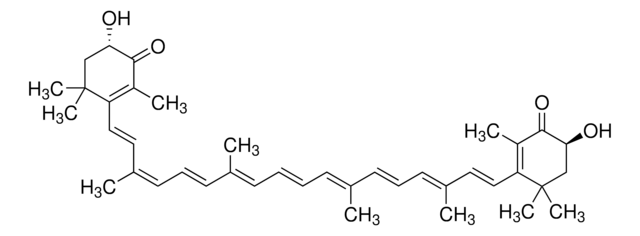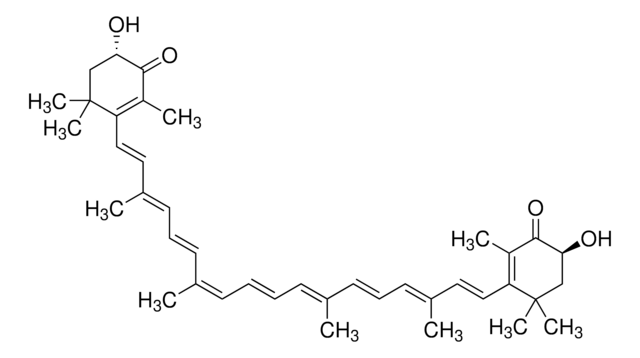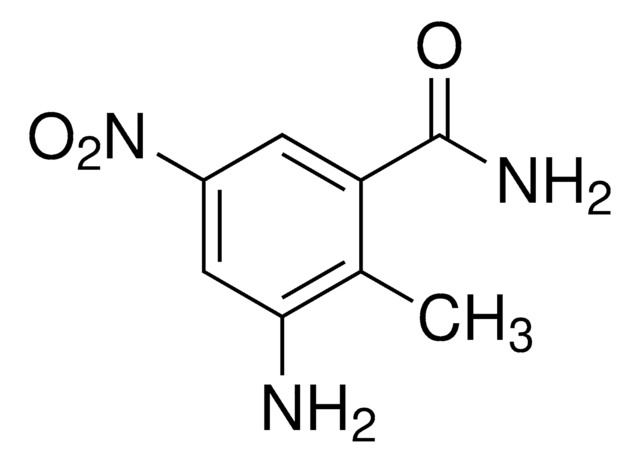SML0982
Astaxanthin
from Blakeslea trispora, ≥97% (HPLC), powder, PPARγ
Sinónimos:
3,3′-Dihydroxy-β-carotene-4,4′-dione, trans-Astaxanthin
About This Item
Productos recomendados
Nombre del producto
Astaxanthin, ≥97% (HPLC), from Blakeslea trispora
origen biológico
Blakeslea trispora
Nivel de calidad
Ensayo
≥97% (HPLC)
Formulario
powder
condiciones de almacenamiento
desiccated
protect from light
color
, pink to very dark purple
solubilidad
DMSO: 1 mg/mL (warmed)
temp. de almacenamiento
−20°C
InChI
1S/C40H52O4/c1-27(17-13-19-29(3)21-23-33-31(5)37(43)35(41)25-39(33,7)8)15-11-12-16-28(2)18-14-20-30(4)22-24-34-32(6)38(44)36(42)26-40(34,9)10/h11-24,35-36,41-42H,25-26H2,1-10H3/b12-11+,17-13+,18-14+,23-21+,24-22+,27-15+,28-16+,29-19+,30-20+/t35-,36-/m0/s1
Clave InChI
MQZIGYBFDRPAKN-UWFIBFSHSA-N
Descripción general
Aplicación
- as an antioxidant to study its effect on Brachionus manjavacas (Rotifera) population growth
- to study its effects on the treatment of diabetic retinopathy.
- to investigate its role in restoring the expression of Nrf2 (nuclear factor erythroid 2 p45-related factor 2) and glutathione S-transferase P1 (GSTP1) through epigenetic modification in human prostate LNCaP cells.
Acciones bioquímicas o fisiológicas
Otras notas
Código de clase de almacenamiento
11 - Combustible Solids
Clase de riesgo para el agua (WGK)
WGK 3
Punto de inflamabilidad (°F)
Not applicable
Punto de inflamabilidad (°C)
Not applicable
Elija entre una de las versiones más recientes:
¿Ya tiene este producto?
Encuentre la documentación para los productos que ha comprado recientemente en la Biblioteca de documentos.
Los clientes también vieron
Protocolos
HPLC Analysis of Carotene Compounds on Ascentis® RP-Amide
Contenido relacionado
Separation of Astaxanthin; Xanthophyll
Nuestro equipo de científicos tiene experiencia en todas las áreas de investigación: Ciencias de la vida, Ciencia de los materiales, Síntesis química, Cromatografía, Analítica y muchas otras.
Póngase en contacto con el Servicio técnico







![1,8-Diazabiciclo[5.4.0]undec-7-eno 98%](/deepweb/assets/sigmaaldrich/product/structures/120/564/5b373e23-1624-489c-8efb-692de0f96ffb/640/5b373e23-1624-489c-8efb-692de0f96ffb.png)



